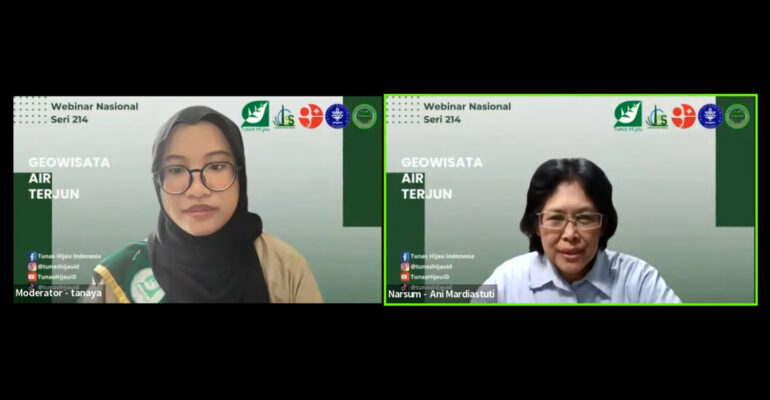IPB University Lecturer Explores the Other Side of Waterfalls, Not Just Natural Beauty

Prof Ani Mardiastuti, IPB University lecturer at the Department of Forest Resource Conservation and Ecotourism (KSHE), Faculty of Forestry and Environment (Fahutan) discussed the geotourism potential of waterfalls in a National Webinar with Tunas Hijau Indonesia, Saturday (02/11).
In her presentation, she revealed that waterfalls are not just natural beauty, but also have many ecological and cultural aspects that need attention.
“Waterfalls are not only a place for recreation, but can also be part of the local culture, attracting tourists who want to learn about local culture and traditions,” she said.
According to her, waterfalls are part of a complex ecosystem, containing biodiversity that needs to be protected, as well as the potential for sustainable geotourism to increase public awareness and education.
“From the beautiful scenery to the geological processes and ecosystems that exist around it, everything contributes to the uniqueness of the waterfall,” Prof Ani said.
She said that research on waterfall ecosystems in Indonesia is still limited. “Although many have researched, there is still a lot of untapped potential, especially in remote areas. We need more research to understand and preserve the biodiversity around waterfalls,” she said.
In terms of biodiversity around the waterfall, Prof Ani explained that this area is a habitat for various plants and wildlife. “This is a unique place. We can find species that may be difficult to find elsewhere,” she said.
One of the interesting things is how the waterfall creates a moist and cool microclimate. “The area around the waterfall is usually cool and humid, which supports the growth of various types of moss and other typical plants,”s he explains.
On the other hand, waterfalls also play an important ecological role. “Falling water creates great energy and flows quickly, carrying sediments that can affect the ecosystem below,” Prof Ani explained.
She reminds us that water quality is very important for the sustainability of the ecosystem. If the waterfall is polluted, not only will the water be damaged, but also the surrounding habitat will be affected.
In addition, Prof Ani shared her views on human activities around waterfalls. “We often see many people coming to play and enjoy the beauty of the waterfall. However, we must also remember that our presence can disturb the wildlife there,” she said.
Prof Ani advised visitors to respect and preserve the waterfall and its surrounding biodiversity. She suggested that tourists visit the waterfall at the right time, such as morning or evening, to avoid disturbing the animals.
“Waterfalls are a natural heritage that we must protect and preserve. We have a responsibility to ensure that future generations can enjoy the beauty and benefits of these waterfalls,” she concluded. (MW) (IAAS/Hap)



